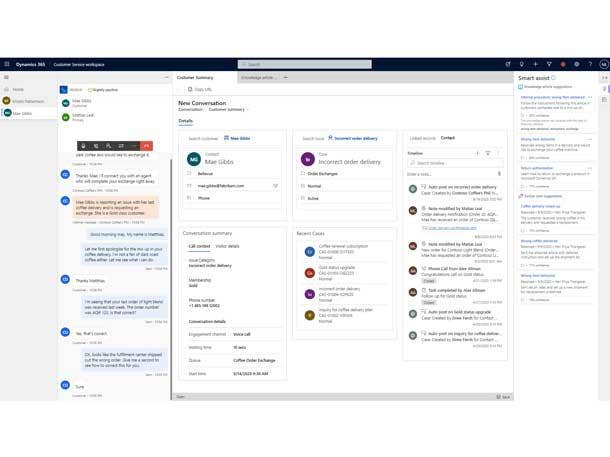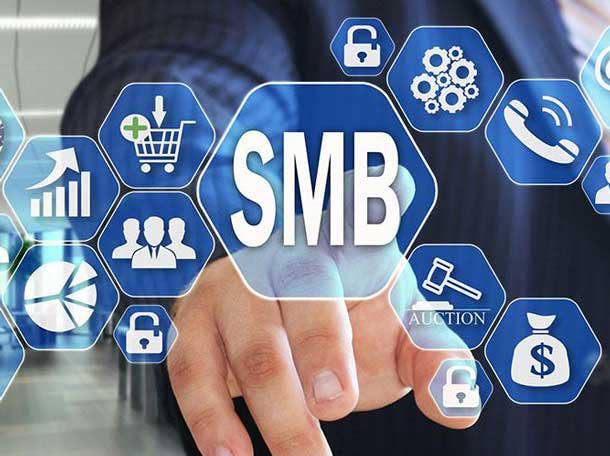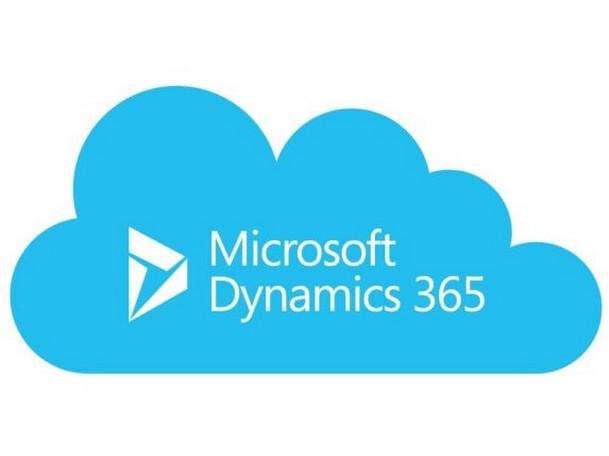Inspire 2022: Microsoft Exec Calls Partners ‘Critical’ To Contact Center Rollout
“If you don't have great customer care, great customer support, you’re not going to have a great brand and people aren't going to have a great relationship with you,” Microsoft CVP Charles Lamanna told CRN in an interview.

Partners will serve “critical” and “absolutely essential” roles as Microsoft introduces its Digital Contact Center offering to the market, Charles Lamanna, Microsoft corporate vice president of business applications and platform, told CRN in an interview.
“Contact centers specifically are at the heart of CX transformation, or customer experience transformation, which is a big initiative for many of our customers,” Lamanna said. “And doing that is something that people look for a partner to help them with.”
The Redmond, Wash.-based tech giant unveiled the new offering during its annual Inspire partner event, which goes from Tuesday to Wednesday online.
Unlike other tech conferences, which have returned in person or with a mix of live and online events, Microsoft held Inspire entirely online as the world continues to grapple with the COVID-19 pandemic.
[RELATED: MICROSOFT NAMES NICOLE DEZEN NEW 'CHIEF PARTNER OFFICER’]
Microsoft’s Charles Lamanna on The Digital Contact Center Platform
* What is the Microsoft Digital Contact Center Platform?
* Are partners a key part of bringing this platform to market?
* Are you seeing interest in contact center technology from small and midsize businesses?
* What resources are there to help partners learn this new technology?
* What should partners expect for product iteration after the platform is released?
Contact centers are “really existential for so many B2C (business-to-consumer) companies,” Lamanna said. “If you don't have great customer care, great customer support, you’re not going to have a great brand and people aren't going to have a great relationship with you.”
In March, Polaris Market Research published a report that put the contact center software market at $23.81 billion in 2021 with a forecasted revenue of $116.02 billion by 2030.
In August, Gartner ranked Genesys, Nice CXone and Talkdesk as leaders in contact-center-as-a-service, with cloud giant Amazon Web Services called a visionary.
“So many of our customers are doing the move to the cloud once and for all in this space,” Lamanna said. “Still, believe it or not, the majority of customers are on premise for their core contact center infrastructure and capabilities and having something that kind of pieces it together makes that move easier and less daunting and less scary.”
Here’s what Lamanna had to say.

On the Digital Contact Center Platform
What is the Microsoft Digital Contact Center Platform?
One of the most exciting things we are working on these days Is around the contact center and customer service. … We’ve really been building out a bunch of investments we’ve been making over the last couple of years – as well as with the Nuance acquisition closing earlier this year – to really help our customers transform how they engage their customers as well as how they operate the contact center.
And this is something that we've heard consistently from all of our existing products. The Nuance enterprise contact center AI group does a lot of amazing work – 17 of the 30 largest financial institutions use things like a hosted interactive voice response – or IVR – or digital engagement platforms and chatbots.
And for Dynamics, we have one of the largest customer service and agent desktop experiences with our offering today. But we keep hearing from customers that they need more help, more automation. And they need it to be easier to implement and build out their customer engagement approach.
There are oodles of stats out there about how much of a struggle it is for so many companies to do a great job here. And it's really existential for so many B2C (business-to-consumer) companies. If you don’t have great customer care, great customer support, you're not going to have a great brand and people aren’t going to have a great relationship with you.
So we’re very excited to announce the Digital Contact Center Platform. And what this does is it takes together these different capabilities – Dynamics 365, the Power Platform, Teams and Nuance – to provide a holistic approach for building a world-class, cloud-based customer engagement contact center offering.
And to make this possible, we've done a bunch of the work to do product-level integration between all the Microsoft products, as well as do a lot of work with a bunch of our major partners so you can easily interoperate between, say, Dynamics and Genesys. Or between, say, Nuance and Salesforce or Nuance and Genesys.
So we’ve done all of that work, so no matter where you are in that journey and what you have already deployed, you can go for a lot, you can go for a little, but in all cases you can transform the agent experience and transform your customers experience.
And the thing that we think is really compelling about that is – so many of our customers are doing the move to the cloud once and for all in this space. Still, believe it or not, the majority of customers are on premises for their core contact center infrastructure and capabilities and having something that pieces it together makes that move easier and less daunting and less scary.
And we're doing a bunch of work to really help turbocharge all these capabilities with AI and through automation. And this is really important because so many of our customers have to manage cost and manage growing demand without being able to quickly easily scale their workforce and dealing with 30 to 40 percent turnover of their contact center employees.
And AI makes it possible where you can coach and guide the agents. And AI also makes it possible where your consumers and your customers can do more self-service and capture.
And then the last bit is we have some good packaging offerings to make it more economical if you pick up more pieces from the Digital Contact Center Platform altogether.

On The Partner Role
Are partners a key part of bringing this platform to market?
Partners are absolutely essential here. And I’d say for two reasons.
The first is I just say Dynamics has a very rich history of the partner channel being a major way that we bring products to market, and that's because so much of your business applications requires consulting around business process transformation and customization. So it’s different from a completely off-the-shelf SaaS product, and that there's a lot of implementation and consultation that happens after you purchase it.
Second thing is, contact centers specifically are at the heart of CX transformation, or customer experience transformation, which is a big initiative for many of our customers. And doing that is something that people look for a partner to help them with.
And we’re very excited that the Microsoft Digital Contact Center Platform actually has several major announcement partners. Accenture is an announced partner of ours. TTEC is an announced partner. PwC. Hitachi. There’s a bunch of them that have signed up. … So I’d say the partner ecosystem is critical.
And we see this – for every dollar people spend on software, there's five or more dollars being spent with partners for implementation and consulting. And we view those things as going together.
Maybe we're a little too clever for ourselves, but we really think the Digital Contact Center Platform, like the platform is trying to capture that idea that there’s a lot of partners involved in implementing a contact center successfully.
And there are partners on the system integrator side but also partners on the ISV (independent software vendor) or software side.

On The SMB Opportunity
Are you seeing interest in contact center technology from small and midsize businesses?
There are some really interesting things happening. The first would be that the cloud makes it a lot more attainable to get a fully enabled, AI-powered contact center if you don't have a big IT department and a big IT budget.
We have a saying internally, which is, 'We want to make sure you can sign up in five seconds and you can be wowed in five minutes with our products.’
And that means as an SMB you could basically have a contact center in the cloud with a phone number, with call routing, with attendant capabilities, voicemail, digital channels, through Teams, plus an agent experience in less than five minutes. And that's something which is very different than how this space has been approached in the past.
So cloud delivery, that true, amazing getting started SaaS experience is a big component. Second thing is, what people's expectations are for customer support, customer service have changed as consumers.
So it's less about always picking up the phone. They’re way more comfortable with asynchronous communication like email and web chat and WhatsApp. And that actually makes customer support way more broadly accessible – because you don't need to have 15 people working the phones 24-7.
You actually can have a smaller set of folks working more customer engagements asynchronously. And that channel revolution – this is happening for everybody, but for SMB in particular.
I can imagine a future where most people don't have a phone number, or very limited phone operations and voice, where instead, (they are) depending much more heavily on pure digital channels.
And you already see that with most of the very large B2C brands created in the last 10, 15 years. Like, when's the last time you called Amazon or FedEx? I mean, it’s all self-service on the web or through digital engagement channels. … You (still) have to have all channels.
Particularly as you scale, you do need to have voice. But for most of the large B2C retail customers we work with at this point, it's already majority non-voice engagement.
And they do it not just as a cost saving measure, they see customer satisfaction go way up because you never are on hold. You can have forms as opposed to dictating information. I have auto-fill from my phone, it can be authenticated, I can do web chat in the app so you know who I am and my account information.
So it’s a more delightful experience, cost structure is lower, but it’s just different. And so helping people through that journey is one of the things that we’re working on inside of our offerings. … Phone is one-to-one synchronous … But with chat, a support agent can support 20 customers concurrently if you build the right experience. So even the engagement model is different and the way the employees work is different.

On Resources For Partners
What resources are there to help partners learn this new technology?
Within the business apps domain, because partners are so key – we can't make our customers successful without our partner ecosystem – we have a bunch of events over the course of the year to cover new announcements.
So every April and October, we have a virtual launch event, where we basically do a roll up of all the big announcements and capabilities over the preceding six months.
And we have deep dive videos. We actually have like a 300-page document we publish, which documents every capability.
We have training and certification, and so we do that twice a year in addition to major conferences like Inspire, Ignite. But that launch event is our hero moment where we ladder all the training around for new stuff.
We always have training because we always have new partners who are launching or expanding their business applications practice with Microsoft, or we have people and individuals who are new to the industry who are ramping up in scaling. So we have start from 100 base and go. And we have the top-ups every six months about all the new capabilities.
That whole rhythm is something we've been doing for three or four years now in business applications. And it is loved, I would say, by the community compared to before because – as opposed to blog posts here and there, catch an article here and there, there is a very structured, systematic approach to get people ramped up. And that’s content, that's material, that’s support, that's hands on, that’s training, that's digital, that’s in person, so lots of different forms.

On Microsoft Partner Capability Scores
Do you have a message to Dynamics partners working on their partner capability scores ahead of the October deadline?
One of the things that we're really trying to do with the partner scores is be more data driven.
For example, be driven by information we can glean from customer success that happens in the wild. So, for example, to strongly assent driving successful deployments and speed deployments and usage and adoption.
So that's been a big change. And I’m more familiar with that because we've worked closely, of course, on the product team, because we’re generating the telemetry and making sure it's secure and compliant and privacy-ensured to go help the scoring that we use for partners. So that’s kind of a major component that goes along with that.
I would say we are always listening and evolving these programs based on partner feedback. So the biggest thing I would say is there certainly is an open invitation for partners if they feel like they need coaching and guidance because we want our partners to be successful.
And also if there's any feedback on the programs themselves, we’re definitely going to listen to that. And every year we're tweaking more and more to make sure we further align Microsoft partner and customer interests. So a good score means that all three are being successful.

On Future Updates
What should partners expect for product iteration after the platform is released?
The first is we’re blurring the lines between productivity software and business software. … This idea of being able to go from Dynamics into Teams and make Teams calls from inside Dynamics or to have Dynamics experiences in Teams.
This is something that we see customers asking for more and more because they don't like business process and communication and collab(oration) to be so isolated. They want them to blend and blur together. So there’s going to be a lot of continued innovation there about where you actually use your business apps and where you communicate and collab to convert.
That’s probably item No. 1. It’s a big focus area for us. And the second thing is, we really think that probably the best place in business apps for AI and automation to be transformational is in the contact center in customer service and customer engagement.
And we think the market proves that to be true based on where the spend is as well. But we think there's amazing potential for AI to make agents super productive and to make experiences more self-service and more automated.
And that's going to have all kinds of great ramifications – cost reduction, customer and consumer experience improvements. And most importantly, just making the agents feel like they spend their time on creative and engaging activities as opposed to lots of data entry and data copying. So that’s a big area of investment for us as well is AI and what it means for the contact center and customer engagement.